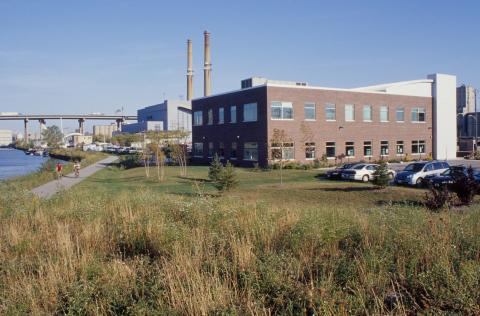A new report titled “The Economic and Fiscal Impact of Wisconsin’s Brownfields Investments” concludes that Wisconsin‘s $121 million investment in cleanup and redevelopment of brownfields has produced important economic gains for the state. It shows that the state’s investment–along with local government investments and federal assistance to brownfields–generated some $6 billion in direct and indirect investment in completed and in-process brownfield projects. It also catalyzed 54,500 direct and indirect jobs.
The report, prepared by the University of Wisconsin-Whitewater Fiscal and Economic Research Center and private consulting firm Redevelopment Economics, cites the strength of industrial and manufacturing re-use as a key finding. As measured by square feet, the leading re-use sector is industrial, with 9.6 million sq ft of new/renovated space, which accommodated 7,300 new/retained jobs in complete or underway projects.
Since 1998, the state has provided grants totaling $121.5 million to private industry and local governments to assist brownfield investigation, cleanup, and redevelopment. When local and federal “brownfields-specific” incentives are added in, the total comes to $162 million. This study assesses the economic and fiscal impacts of these public investments. In general, the principal finding is that Wisconsin’s brownfields programs are efficiently cleaning up land and re-establishing productive use; in so doing, Wisconsin gains numerous economic, community, and environmental benefits.
Starting with the basics, the findings are:
- The State brownfields funding programs assisted 703 sites, resulting in 4,713 acres of contaminated land that was at least assessed and/or cleaned up. Of the 703 sites, researchers were able to determine the redevelopment
status of 563 sites, a little more than 80 percent of all assisted sites. - Redevelopment was complete or underway at 356 or 63 percent of the sites where data was available, resulting in 3,393 acres (72 percent of the total acreage) being redeveloped. This is an impressive success rate, given the
inherent risks of brownfields projects, as well as the fact that there have been two significant real estate recessions that undoubtedly left many plans on the drawing boards. - Redevelopment produced 28.2 million sq ft of new/renovated space.
Abandoned brownfield sites represent lost economic activity; so analysts look for indicators that the program is successfully replacing that economic activity, while reinforcing the strength of existing communities. The findings are:
- One-time impacts – That State’s investment, coupled with local government investments and federal assistance to brownfields, has generated $3.3 billion in direct total investment (or $6 billion direct and indirect investment) in completed and underway brownfield projects.
- On-going economic output – economic activity associated with the businesses now occupying completed projects amounts to $4.4 billion direct (or $7.6 billion direct and indirect) statewide “economic output.”
- Permanent jobs – There were a total of 29,900 direct new and retained permanent jobs (or 54,500 direct and indirect jobs) generated in assisted complete/underway brownfields projects. Projects representing an additional 9,100 jobs are planned, thus the total pipeline is 39,000 direct permanent jobs. The State’s leverage ratio for permanent jobs is that it takes $3,000 in state brownfields funding to leverage one job, a ratio that compares very favorably to several benchmarks.
- Industrial and manufacturing – As measured by square feet, the leading re-use sector is industrial, with 9.6 million sq ft of new/renovated space, which accommodated 7,300 new/retained jobs in complete or underway
projects. This result is surprising, given the transition of many older industrial areas to office and residential uses. In addition, industrial re-use is highly desirable because industrial jobs are almost entirely “economic base” jobs in businesses that are selling (or exporting) goods and services outside of the region; hence, industrial re-use brings dollars into the region, generating a higher level of prosperity for Wisconsin communities.

